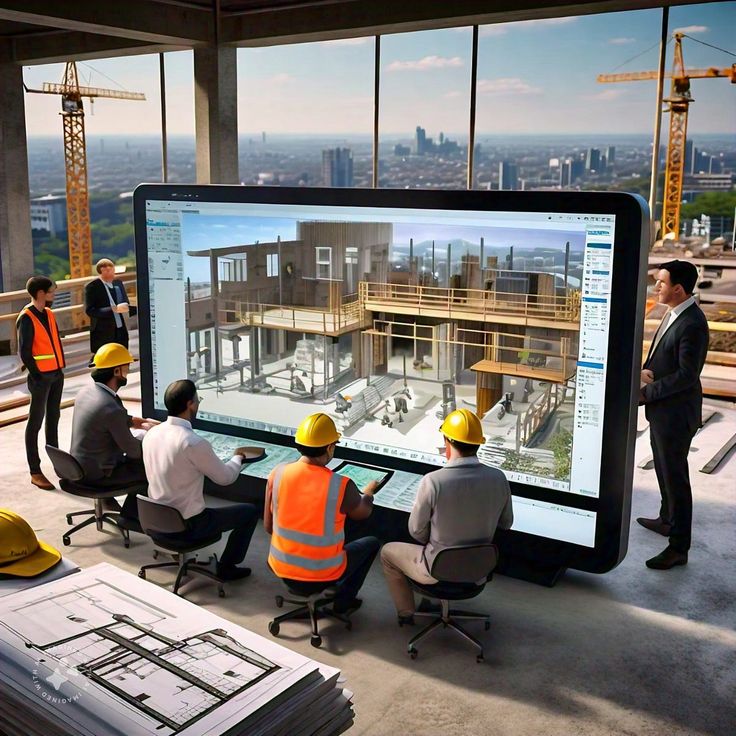
The field of civil engineering is evolving rapidly. Emerging technologies are shifting how we design, build and maintain structures — and one of the most disruptive technologies is Building Information Modelling (BIM).
Think of BIM as a digital twin of a construction project — a smart, living model that includes not just the geometry of the project, but also all the information about materials, costs , schedules etc., right through to maintenance. BIM allows engineers, architects and contractors to collaborate in a way that is more efficient, smarter and much less error-prone.
For civil engineers, using BIM is no longer an innovation, it is now necessary. It does not matter if you are designing a bridge, a road or a whole city infrastructure, BIM is becoming the industry standard. In this article we will take a look at why BIM is important, its advantages, and we will highlight the 10 best BIM tools for every civil engineer to learn in order to future-proof your career in 2025.
What is BIM for Civil Engineers?
BIM is not only a software program — it is a method that will revolutionize the way civil engineers practice. You go from having static connections and drawings to a live 3D model that you can rotate and modify as the project develops.
These models use accurate geometry, data and specifications on how it was fabricated, cost, schedules, etc. They can help engineers to visualize projects before they are built, and change them if needed in real-time. This level of accuracy saves time, money and ultimately prevents costly mistakes during construction.
How BIM is Used in Civil Engineering
BIM has many functions that can make life easier for civil engineers:
Better design and visualization – BIM enables engineers to create realistic 3D models that help the team visualize the complete project and identify issues earlier.
Enhanced Collaboration – Team members will be communicating with each other better based on the spirit of a shared digital model that mitigates the possibility of misunderstandings.
Information Consolidation – BIM consolidates all project information in one digital environment, which allows team members to work with the most accurate and up to date information.
Clash Detection – While seeing conflicts between systems is possible with 2D drawings, BIM allows all conflicts to be identified before it becomes an expensive change to manage on the jobsite.
Cost Estimation – Cost data can be linked directly to the 3D model and driven by the changes in the model for tracking budgets in real time.
Why BIM Matters for Civil Engineers
BIM is more than a fad. It provides real and quantifiable benefits:
– Enhanced Collaboration- Everyone is working off of one model diminishing confusion and improving the project’s rhythm.
– Higher Quality Projects- BIM helps to discover design flaws and safety risks early.
– Faster, Cheaper Construction- Work can be completed more quickly and with less rework due to early problem discovery.
– Environmental Sustainability- BIM models are helpful to identify environmental impacts and design solutions to limit the impacts during the design process.
– Maintenance- BIM models are beneficial tools for facilities management long after the project has been constructed.
For example, BIM was used to coordinate complex systems on the Burj Khalifa’s construction, showing its power in delivering sizeable, quality projects.
Is Learning BIM Worth It?
Absolutely Not. There is certainly a global increase in demand for BIM capabilities. It is reflected in job opportunities, pay, and the types of projects engineers are involved in. Engineers who are familiar with BIM are not just designers, they are partners in collaboration, troubleshooting, and leadership.
Top 10 BIM Software Tools for Civil Engineers in 2025
The following are the Bim tools you need to be informed of to keep up with the trend:
1.Autodesk Revit
A strong BIM platform for architectural design, Revit integrates the high-end parametric modelling and also the communication functions you require.
2.AutoCAD Civil 3D
Perfect for the design of roads, land development and drainage, it also has an excellent documentation feature.
3.Tekla Structures
Tekla is the expert of structural design and provides the most precise modelling, clash detection, and fabrication capabilities.
4.Bentley Systems
It comes with MicroStation (3D modelling/coordination), OpenRoads Designer (road design), and ProjectWise (collaboration tools).
5.ArchiCAD
A designer-friendly program with the best visualization, everyone from the professional fields can use ArchiCAD for multidisciplinary projects.
6.InfraWorks
Nice for the preliminary design and the study of the project’s viability especially in the case of big infrastructure projects.
7.Allplan Engineering
All plan is a project design that includes all the phases of design and the control of its cost.
8.OpenBuildings Designer
OpenBuildings Designer is a unified product for architectural, structural, mechanical, and electrical design; perfect for complicated projects.
9.Vectorworks Landmark
Vectorworks is for Landscape and Site Planning; Modelling and Sustainability are also its strong points.
10.Navisworks
It is a project review & clash detection, and simulation tool that helps the teams to become more effective.
Best BIM Courses for Civil Engineers in 2025
If you are seeking to become proficient in BIM, you should check out the following courses:
The BIM Professional Course offered by Novatr – a comprehensive course, with projects to apply learning in Revit and numerous BIM tools.
BIM Ready (Arch + Structure) through Techno Struct Academy – this program focuses on a class based course following architectural and structural BIM workflows.
The BIM Course from Capricot – a full course offering training and resources suitable for all levels of BIM skill, including clash detection and project management.
Conclusion
BIM is changing civil engineering for the better. Collaboration amongst team members is improved, reduced errors, time and cost savings, and more sustainable buildings are being constructed. Civil engineers will lead the way into the future of construction when skilled with BIM tools such as Revit, Civil 3D and Tekla Structures.



